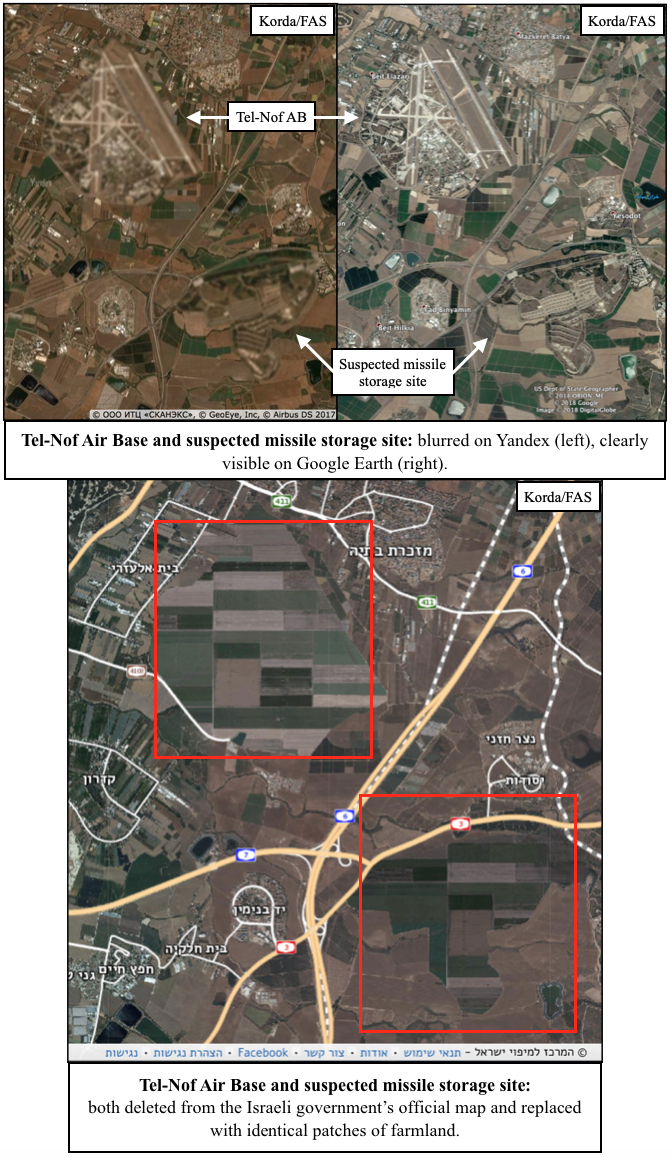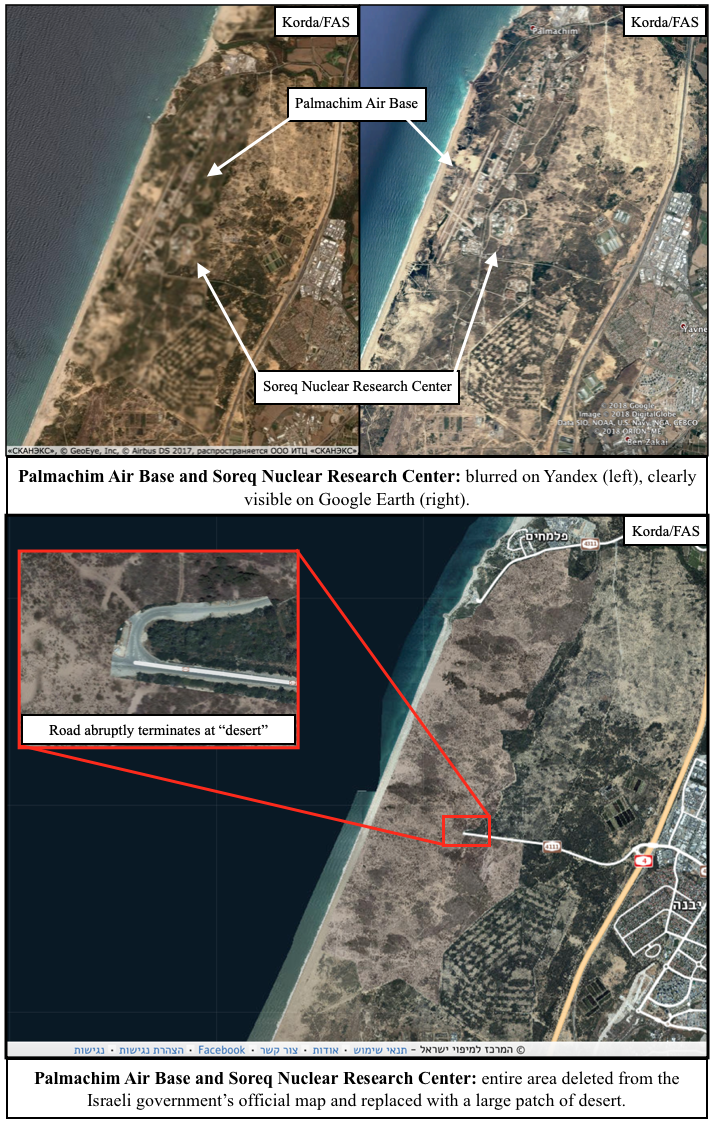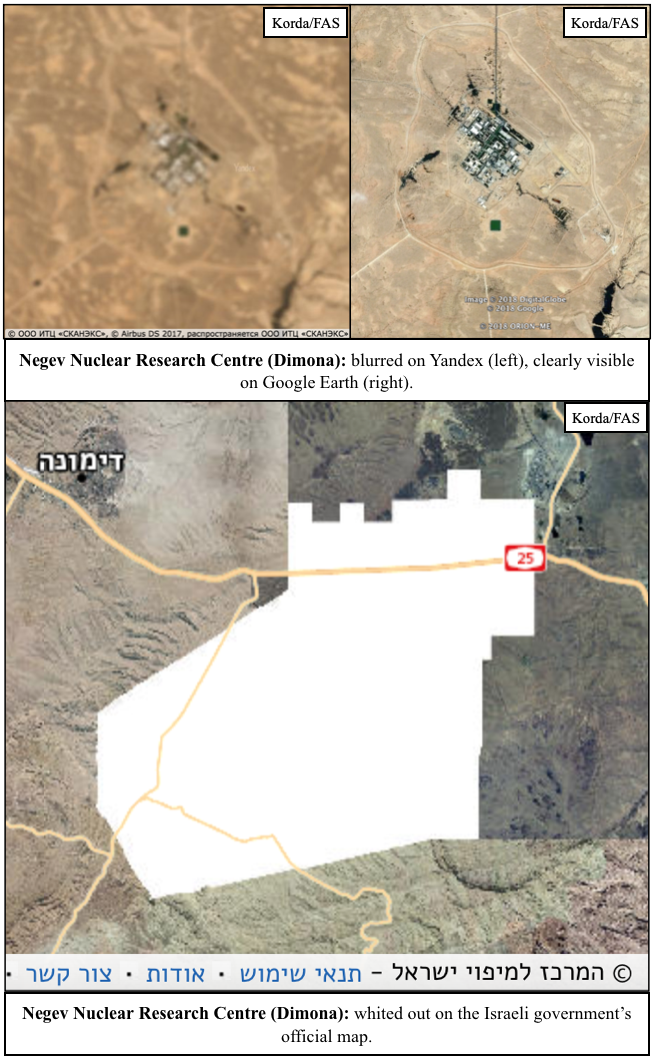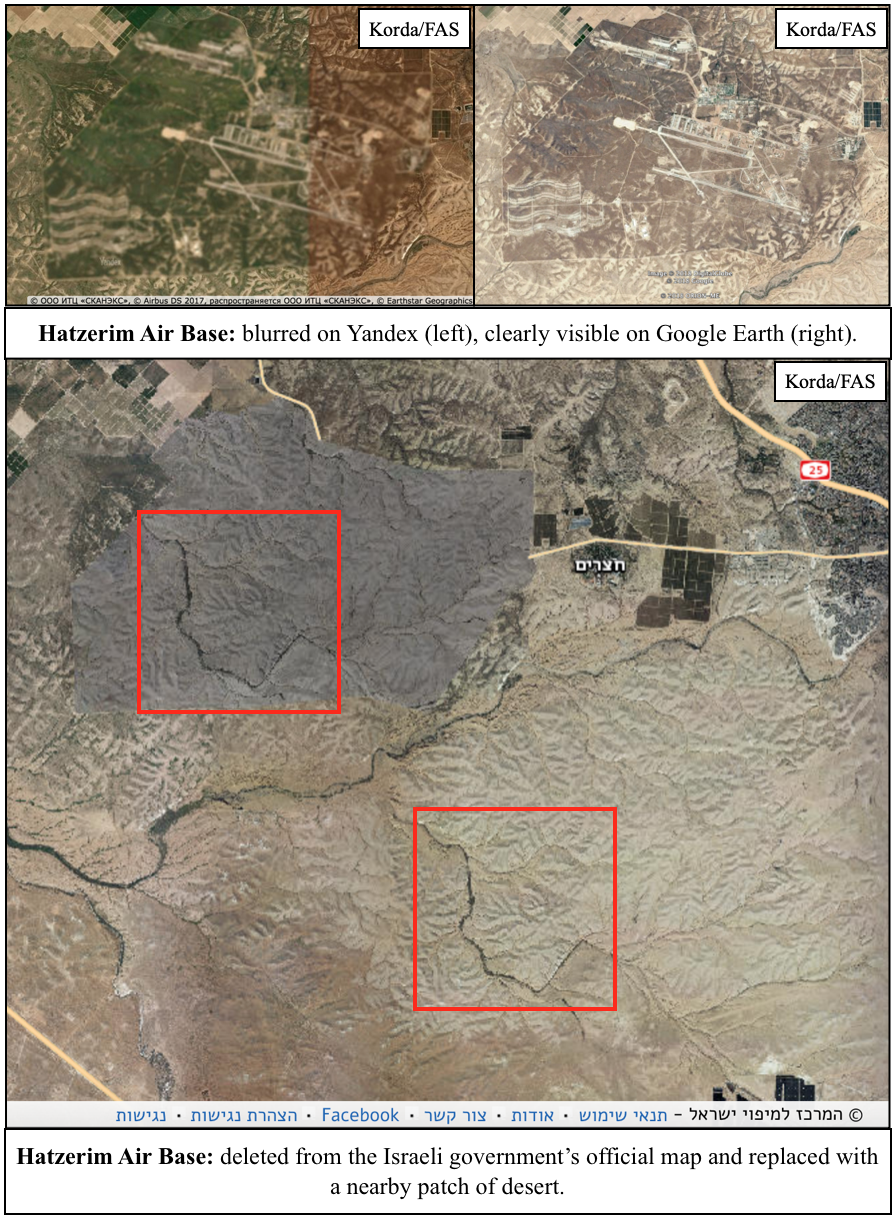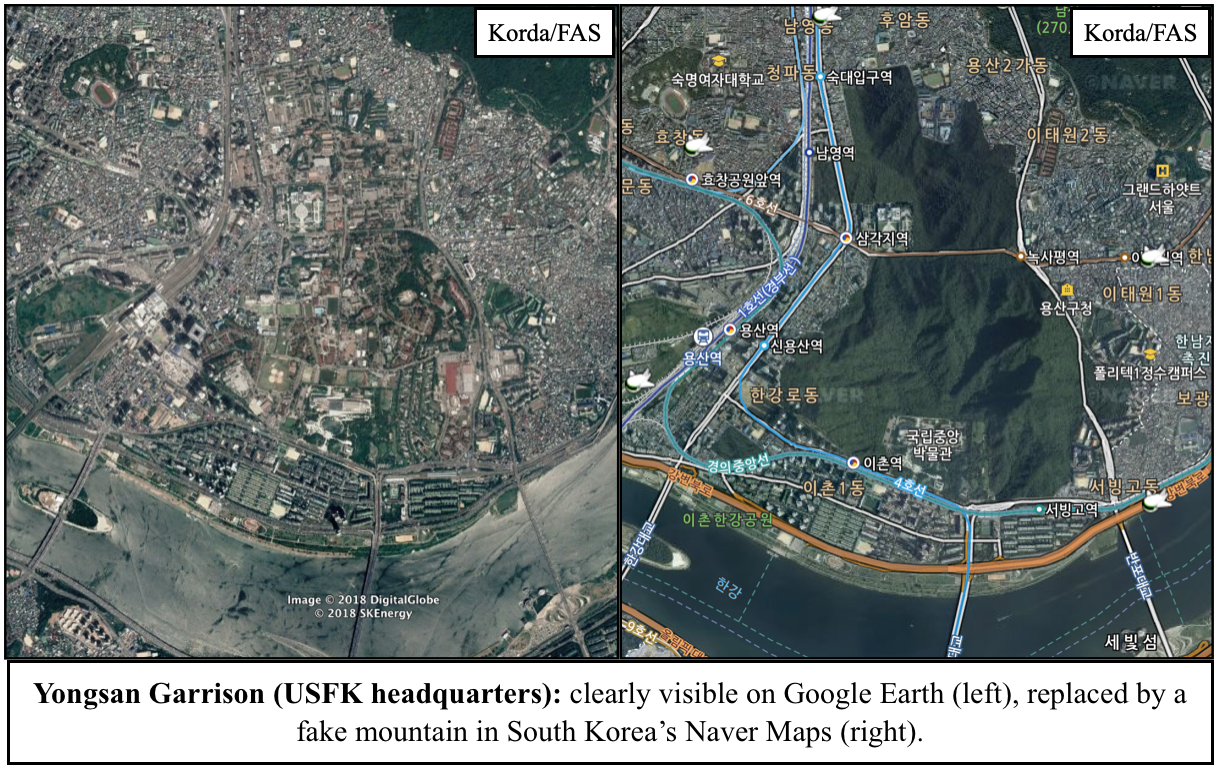Trump Demotes DNI to Empower AG Barr
President Trump issued a memorandum last week that transfers to the Attorney General the authority of the Director of National Intelligence to declassify intelligence information concerning the 2016 election.
The memorandum effectively amends Executive Order 13526 on classification on national security information, but in a highly customized way: It applies only to Attorney General William Barr (not any successors) and only to the investigation of the 2016 presidential campaigns. The memorandum was published in the Federal Register today.
Even so, the move represents a functional demotion of the Director of National Intelligence and a partial transfer of his authority to the Attorney General.
Executive Order 13526 gave sweeping authority over declassification of intelligence information to the DNI, who was authorized to “declassify, downgrade, or direct the declassification or downgrading of information or intelligence relating to intelligence sources, methods, or activities.” (sect. 3.1c)
The new presidential memorandum adopts the same language but modifies the provision to state that it is Attorney General Barr who may now “declassify, downgrade, or direct the declassification or downgrading of information or intelligence that relates to the Attorney General’s review.”
No rationale for the change was provided, though it was understood to support the Attorney General’s investigation into what he called U.S. government “spying” on the Trump campaign.
Senator Mark Warner (D-VA) warned that the move threatened to politicize intelligence. “Selectively declassifying sources and methods in order to serve a political agenda will make it harder for the intelligence community to do their jobs protecting this country from those who wish to do us harm,” he said.
For his part, DNI Dan Coats said that “I am confident that the Attorney General will work with the IC in accordance with the long-established standards to protect highly-sensitive classified information that, if publicly released, would put our national security at risk.”
* * *
There is some precedent for overriding the judgment of the DNI concerning the protection of sources and methods.
A 1999 decision of the Justice Department Office of Legal Counsel concluded that the presidentially-established Interagency Security Classification Appeals Panel could declassify intelligence information over the objections of the Director of Central Intelligence.
While it is true that the DCI, and now the DNI, is obliged by the National Security Act to protect intelligence sources and methods from unauthorized disclosure, the Director’s authority in this area is not absolute or exclusive.
Specifically, “If the President concludes that information concerning intelligence sources and methods should not be classified, the disclosure of such information simply is not ‘unauthorized’ within the meaning of the [National Security Act],” wrote Randolph D. Moss of the Office of Legal Counsel in his 1999 opinion.
Still, this OLC conclusion may not be correct (said a non-lawyer) because “declassification” is not the same as “disclosure.” Even intelligence information that is declassified or unclassified may still be, and often is, protected from public disclosure by the DNI under the provisions of the National Security Act.
The new presidential memorandum does not address the question of disclosure at all.
Pentagon Blocks Declassification of 2018 Nuclear Stockpile
For the first time in years, the Department of Defense has denied a request to declassify the current size of the U.S. nuclear weapons stockpile.
“After careful consideration. . . it was determined that the requested information cannot be declassified at this time,” wrote Andrew P. Weston-Dawkes of the Department of Energy in a letter conveying the DoD decision not to disclose the number of warheads in the U.S. arsenal at the end of Fiscal Year 2018 or the number that had been dismantled.
The Federation of American Scientists had sought declassification of the latest stockpile figures in an October 1, 2018 petition. It is this request that was denied.
Because the current size of the U.S. nuclear stockpile constitutes so-called “Formerly Restricted Data,” which is a classification category under the Atomic Energy Act, its declassification requires the concurrence of both the Department of Energy and the Department of Defense. In this case, DOE did not object to declassification but DOD did.
* * *
The size of the current stockpile was first declassified in 2010. It was one of a number of breakthroughs in open government that were achieved in the Obama Administration. (Until that time, only the size of the historic stockpile through 1961 had been officially disclosed, which was done in 1993.)
“Increasing the transparency of our nuclear weapons stockpile, and our dismantlement, as well, is important to both our nonproliferation efforts and to the efforts we have under way to pursue arms control that will follow the new START treaty,” said a Pentagon official at a May 2010 press briefing on the decision to release the information.
In truth, the size of the U.S. nuclear stockpile was not such a big secret even when it was classified. Before the 2009 total of 5,113 warheads was declassified in 2010, Hans Kristensen and Robert Norris of FAS had estimated it at 5,200 warheads. Likewise, while the 2013 total turned out to be 4,804 warheads, their prior open source estimate was not too far off at 4,650 warheads.
But even if it is partly a formality, classifying stockpile information means that officials cannot publicly discuss it or be effectively questioned in public about it.
* * *
But why now? Why is the Pentagon reverting to the pre-Obama practice of keeping the total stockpile number and the number of dismantled weapons classified? Why could the FY 2017 total (3,822 warheads) be disclosed, while the FY 2018 total cannot?
No reason was provided in the latest denial letter, and none of the decision makers was available to explain the rationale behind it.
But another official said the problem was that one of the main purposes of the move to declassify the stockpile total — namely, to set an example of disclosure that other countries would follow — had not been reciprocated as hoped.
“Stockpile declassification has not led to greater openness by Russia,” the official said.
“Anyway, it’s not a bilateral world anymore,” he said. And so DoD would also be looking for greater transparency from China than has been realized up to now.
Have new U.S. nuclear weapons programs played a role in incentivizing greater secrecy? “I doubt it,” this official said. “If anything, it’s the reverse. The US government has a motive to make it clear where it’s headed.”
* * *
“I think we should have more communication with Russia,” said U.S. Army Gen. Curtis Scaparrotti, the retiring Supreme Allied Commander Europe. “It would ensure that we understand each other and why we are doing what we’re doing.”
But for now, that’s not the direction in which things are moving, and not only with respect to stockpile secrecy. See “US-Russia chill stirs worry about stumbling into conflict” by Robert Burns, Associated Press, April 14.
Declassified U2 Photos Open a New Window into the Past
Updated below
Archaeologists are using declassified imagery captured by U2 spy planes in the 1950s to locate and study sites of historical interest that have since been obscured or destroyed.
This work extends previous efforts to apply CORONA spy satellite imagery, declassified in the 1990s, to geographical, environmental and historical research. But the U2 imagery is older and often of higher resolution, providing an even further look back.
“U2 photographs allowed us to present a more complete picture of the archaeological landscape than would have otherwise been possible,” wrote archaeologists Emily Hammer and Jason Ur in a new paper. See Near Eastern Landscapes and Declassified U2 Aerial Imagery, Advances in Archaeological Practice, published online March 12, 2019.
The exploitation of U2 imagery required some ingenuity and entrepreneurship on the authors’ part, especially since the declassified images are not very user-friendly.
“Logistical and technical barriers have for more than a decade prevented the use of U2 photography by archaeologists,” they noted. “The declassification included no spatial index or finding aid for the planes’ flight paths or areas of photographic coverage. The declassified imagery is not available for purchase or download; interested researchers must photograph the original negatives at the NARA II facility in College Park, Maryland.”
Since no finding aids existed, the authors created them themselves. Their paper also contains links to web maps to help other researchers locate relevant film cans and order them for viewing in College Park.
“These [U2] photographs are a phenomenal historical resource,” said Professor Ur. “Have a look at Aleppo in 1959 and Mosul in 1958. These places are now destroyed.”
Update: Related work involving declassified aerial imagery in the UK was described in “Use of archival aerial photographs for archaeological research in the Arabian Gulf” by Richard N. Fletcher et al, Proceedings of the Seminar for Arabian Studies 48 (2018): 75–82:
- Summary
A valuable archaeological and historical resource is contained within recently declassified aerial imagery from the UK’s Joint Aerial Reconnaissance Intelligence Centre (JARIC), now held at the National Collection of Aerial Photography in Edinburgh (NCAP). A project at UCL-Qatar has begun to exploit this to acquire and research the historical aerial photography of Qatar and the wider Gulf region. The JARIC collection, comprising perhaps as many as 25 million photographs from British intelligence sources in the twentieth century, mainly from Royal Air Force reconnaissance missions, is known to include large quantities of aerial photography from the Gulf that have never been seen outside intelligence circles, dating from 1939 to 1989. This paper will demonstrate how others may gain access to this valuable resource, not only for the Gulf but for the entire MENA (Middle East and North Africa) region. We will explore the research value of these resources and demonstrate how they enrich our understanding of the area. The archive is likely to be of equal value to archaeologists and historians of other regions.
Israel’s Official Map Replaces Military Bases with Fake Farms and Deserts
Somewhat unexpectedly, a blog post that I wrote last week caught fire internationally. On Monday, I reported that Yandex Maps—Russia’s equivalent to Google Maps—had inadvertently revealed over 300 military and political facilities in Turkey and Israel by attempting to blur them out.
In a strange turn of events, the fallout from that story has actually produced a whole new one.
After the story blew up, Yandex pointed out that its efforts to obscure these sites are consistent with its requirement to comply with local regulations. Yandex’s statement also notes that “our mapping product in Israel conforms to the national public map published by the government of Israel as it pertains to the blurring of military assets and locations.”
The “national public map” to which Yandex refers is the official online map of Israel which is maintained by the Israeli Mapping Centre (מרכז למיפוי ישראל) within the Israeli government. Since Yandex claims to take its cue from this map, I wondered whether that meant that the Israeli government was also selectively obscuring sites on its national map.
I wasn’t wrong. In fact, the Israeli government goes well beyond just blurring things out. They’re actually deleting entire facilities from the map—and quite messily, at that. Usually, these sites are replaced with patches of fake farmland or desert, but sometimes they’re simply painted over with white or black splotches.
Some of the more obvious examples of Israeli censorship include nuclear facilities:
- Tel-Nof Air Base is just down the road from a suspected missile storage site, both of which have been painted over with identical patches of farmland.
- Palmachim Air Base doubles as a test launch site for Jericho missiles and is collocated with the Soreq Nuclear Research Center, which is rumoured to be responsible for nuclear weapons research and design. The entire area has been replaced with a fake desert.
- The Haifa Naval Base includes pens for submarines that are rumoured to be nuclear-capable, and is entirely blacked out on the official map.
- The Negev Nuclear Research Center at Dimona is responsible for plutonium and tritium production for Israel’s nuclear weapons program, and has been entirely whited out on the official map.
- Hatzerim Air Base has no known connection to Israel’s nuclear weapons program; however, the sloppy method that was used to mask its existence (by basically just copy-pasting a highly-distinctive and differently-coloured patch of desert to an area only five kilometres away) was too good to leave out.
Given that all of these locations are easily visible through Google Earth and other mapping platforms, Israel’s official map is a prime example of needless censorship. But Israel isn’t the only one guilty of silly secrecy: South Korea’s Naver Maps regularly paints over sensitive sites with fake mountains or digital trees, and in a particularly egregious case, the Belgian Ministry of Defense is actually suing Google for not complying with its requests to blur out its military facilities.
Before the proliferation of high-resolution satellite imagery, obscuring aerial photos of military facilities was certainly an effective method for states to safeguard their sensitive data. However, now that anyone with an internet connection can freely access these images, it simply makes no sense to persist with these unnecessary censorship practices–especially since these methods can often backfire and draw attention to the exact sites that they’re supposed to be hiding.
Case studies like Yandex and Strava—in which the locations of secret military facilities were revealed through the publication of fitness heat-maps—should prompt governments to recognize that their data is becoming increasingly accessible through open-source methods. Correspondingly, they should take the relevant steps to secure information that is absolutely critical to national security, and be much more publicly transparent with information that is not—hopefully doing away with needless censorship in the process.
Nuclear Stockpile Declassification Sought
The Federation of American Scientists asked the Department of Energy and the Department of Defense to declassify and disclose the current size of the U.S. nuclear stockpile, as they have done in past years.
The number of nuclear weapons presently in the U.S. arsenal is deemed “Formerly Restricted Data” (FRD) that is classified under the Atomic Energy Act. Unlike information that is classified by executive order, there is no provision for automatic declassification of such information. Furthermore, information that is classified as FRD requires the concurrence of both the Department of Energy and the Department of Defense in order to be declassified.
But there is a provision of DOE regulations that enables anyone to request the declassification of specific FRD. And so we (once again) invoked that provision to request declassification of the stockpile size.
“We have formally sent this [request] over to the DoD for their consideration,” said Dr. Andrew Weston-Dawkes, director of the DOE Office of Classification, to whom the request was directed.
DOE Declassifies Declassification of Downblending Move
Last year, the Department of Energy decided to declassify the fact it intended to make 25 metric tons of Highly Enriched Uranium available from “the national security inventory” for downblending into Low Enriched Uranium for use in the production of tritium.
However, the decision to declassify that information was classified Secret.
This year, the Department of Energy decided to declassify the declassification decision, and it was disclosed last week under the Freedom of Information Act.
While the contortions in classification policy are hard to understand, the underlying move to downblend more HEU for tritium production probably makes sense. Among other things, it “delays the urgency — but doesn’t eliminate the eventual need — to build a new domestic enrichment capacity,” said Alan J. Kuperman of the University of Texas at Austin.
There were 160 MT of US HEU downblended by the end of FY 2018, according to the FY 2019 DOE budget request (volume 1, at page 474), and a total of 162 MT was anticipated by the end of FY 2019, as noted recently by the International Panel on Fissile Materials.
“The overall amount of HEU available for down-blending and the rate at which it will be down-blended is dependent upon decisions regarding the U.S. nuclear weapons stockpile, the pace of warhead dismantlement and receipt of HEU from research reactors, as well as other considerations, such as decisions on processing of additional HEU through H-Canyon, disposition paths for weapons containing HEU, etc,” according to the DOE budget request.
Historical Advisory Committee Reports Setbacks in 2017
The substantial progress that was achieved in recent years in producing the State Department’s official Foreign Relations of the United States (FRUS) series was reversed in several respects last year, according to a new annual report from the Department’s Historical Advisory Committee.
The FRUS series is required by statute to publish a “thorough, accurate, and reliable” documentary record of United States foreign relations no later than 30 years after the events that they document.
To a large extent, FRUS is dependent on — and also helps to motivate — declassification of national security and foreign policy records. Such declassification in turn depends on the cooperation of other agencies who are called upon to review selected documents.
But “The pace of the reviews of FRUS volumes submitted to the Central Intelligence Agency (CIA) and Department of Defense (DoD) and the declassification of documents was disappointing” in 2017, the new annual report said.
The Department of Defense “was unconscionably tardy and inattentive. It completed only one out of eleven volumes submitted for review throughout the entire year.”
Because most of the historically significant documents provided to DoD were not reviewed and cleared for release in any form, the FRUS volumes that were planned to contain them cannot be published any time soon.
Likewise, “Although in 2017 CIA did not behave nearly as irresponsibly as DoD, it performed below the expectations produced over the several preceding years.”
On the other hand, the Committee found reason to praise the State Department, the National Archives, and the National Security Council. Another bright spot in 2017 was the publication of the long-delayed FRUS supplement on events surrounding the 1953 coup in Iran.
The annual report concluded with several legislative proposals and policy recommendations that the Advisory Committee believes would promote an improved review and publication process.
But it is unclear whether the State Department itself will be receptive to any such improvements. The Department has not been overly friendly to its own History Office (HO), the Historical Advisory Committee (HAC) noted.
“The unexpected and unprecedented decision of the State Department’s leadership in December to reject HO’s request to renew three HAC members unsettled both the committee and the office,” the annual report said.
The Aging Secrecy System Is “At a Crossroads”
Today’s national security classification system is unsustainable, says a new annual report to the President from the government’s Information Security Oversight Office (ISOO). It is “hamstrung by old practices and outdated technology” and a new, government-wide technology strategy will be required “to combat inaccurate classification and promote more timely declassification.”
The secrecy system has expanded to the point that it is effectively unmanageable and often counterproductive, ISOO indicated.
“Too much classification impedes the proper sharing of information necessary to respond to security threats, while too little declassification undermines the trust of the American people in their Government. Reforms will require adopting strategies that increase the precision and decrease the permissiveness of security classification decisions, improve the efficiency and effectiveness of declassification programs, and use modern technology in security classification programs across the Government,” the report said.
“We are at a crossroads” wrote ISOO director Mark Bradley in a May 31 letter to the President transmitting the report, which was made public today.
ISOO’s sense of urgency is reflected in the annual report itself, which strives to be more forward leaning and policy-relevant than many past ISOO reports. It goes beyond the recitation of (often questionable) statistics on classification activity to present a series of findings and recommended actions that it says are needed to restore the integrity of the system.
In addition to a call for development of a comprehensive new technology strategy for classification and declassification, ISOO specifically recommends adding a new budget line item for security classification in agency budget requests to help regulate and justify expenditures, and adding a public member to the Information Security Classification Appeals Panel to represent the broad public interest in that Panel’s work on declassification.
Some of the other recommendations in the report flag problem areas rather than advance solutions, and tend to do so in the passive voice: “Policies must be revised to improve the effectiveness and efficiency of automatic declassification.” How exactly should the policies be revised? Adopt a “drop-dead date” for classification? Eliminate agency referrals for older documents? Grant broad declassification authority to the National Declassification Center? The report doesn’t say.
Much of the data traditionally reported by ISOO regarding classification activity is suggestive but not truly informative. Just as one cannot judge the overall health of the economy from stock market averages, changes in the volume of classification activity say nothing about its quality or legitimacy. In 2017, ISOO found that original classification activity (production of new secrets) increased for the first time in four years. At the same time, derivative classification decreased. The significance of these developments, if any, is unclear.
But other ISOO findings in the new report are more interesting.
ISOO said that last year there were again hundreds of classification challenges presented by government employees who disputed the classification of particular items of information. Most of the challenges were denied, but in 8% of the cases (a small but non-negligible number) they were upheld and the classifications in question were overturned. Such classification challenges “serve a critical role by uncovering information improperly classified in the first instance,” the ISOO report said, providing “an internal check on the system.” Because the challenges are now mostly localized in just a few agencies, this practice has the potential to have far more impact in combating overclassification if it can be adopted and encouraged more widely across the executive branch.
The ISOO report summarized the results of the latest Fundamental Classification Guidance Review, which led to the cancellation of 221 security classification guides (out of 2,865 guides). The cancelled guides will no longer be available for use in classifying information.
ISOO also cast a favorable spotlight on the new approach to classification led by the National Geospatial-Intelligence Agency. NGA now requires written justifications for original classification decisions, along with a description of the damage that would result from unauthorized disclosure, and an unclassified paraphrase of the classified information. The resulting NGA classification guidance currently represents a “best practice” in classification policy, ISOO said. That is to say, it represents a model that could constructively be applied elsewhere in agencies that classify national security information.
The ISOO report also addressed escalating classification costs (which reached a new high in 2017), growing backlogs of mandatory declassification review requests, and the contentious implementation of Controlled Unclassified Information policy, among other topics.
Fixing the classification system is a slow and uncertain process, and some people don’t want to wait.
Sen. Doug Jones (D-Ala.) introduced legislation this week to accelerate the release of records concerning unsolved criminal civil rights cases from half a century ago. Some of those records, in his estimation, “remain classified unnecessarily.” So his bill (S. 3191) would work around that classification obstacle with an alternative approach. Modeled in part on the JFK Assassination Records Act of 1992, the bill would empower a panel of private citizens to review and decide on disclosure of the records.
Meanwhile, the Department of Defense recently issued a “request for information” about technology that could aid in the classification process. The desired technology “must be able to make real-time decisions about the classification level of the information and an individual’s ability to access, change, delete, receive or forward the information.” (FBO, NextGov, ArsTechnica)
National Declassification Center Seeks Director
The National Declassification Center at the National Archives is looking for a director to help implement its declassification agenda.
The National Declassification Center was established by President Obama’s 2009 executive order 13526 “to streamline declassification processes,” and it has had some success in bringing order to an often arbitrary declassification environment. One of the Center’s recent “special projects” involves review of records of the Office of the Secretary of Defense with 1.3 million pages processed and 830 thousand pages declassified.
2017 Nuclear Stockpile Total Declassified
The number of nuclear weapons in the U.S. nuclear stockpile dropped to 3,822 as of September 30, 2017, down from 4,018 a year earlier. (Retired weapons awaiting dismantlement are not included in the totals.)The totals do not include weapons that are retired and awaiting dismantlement.)
Meanwhile, 354 nuclear weapons were dismantled in 2017, up from 258 the year before.
These figures were declassified in response to a request from the Federation of American Scientists and were made public yesterday.
The declassification of the current size of the US nuclear arsenal was a breakthrough in national security transparency that was accomplished for the first time by the Obama Administration in 2010.
It was uncertain until now whether or when the Trump Administration would follow suit.
Because the stockpile information qualifies as Formerly Restricted Data under the Atomic Energy Act, its declassification does not occur spontaneously or on a defined schedule. Disclosure requires coordination and approval by both the Department of Energy and the Department of Defense, and it often needs to be prompted by some external factor.
Last October, the Federation of American Scientists petitioned for declassification of the stockpile numbers, and the request was ultimately approved.
“Your request was the original driver for the declassification,” said Dr. Andrew Weston-Dawkes, the director of the DOE Office of Classification. “We regret the long time to complete the process but in the end the process does work.”
Earlier this week, FAS requested declassification of the current inventory of Highly Enriched Uranium, which has not been updated since 2013.
Declassification News
The National Declassification Center released a listing of 134 record collections that have undergone declassification review in the past five months.
The collections include records on the Weapons System Evaluations Group (discussed here), a compilation of records assembled by Judge Merrick Garland when he was special assistant to the attorney general in 1979-81 (discussed here), embassy files from Indonesia, Iraq, and Burundi, and miscellaneous others.
Meanwhile, the Public Interest Declassification Board said that it will soon release a draft report on “modernization of the US national security classification and declassification system.” The Board said it will seek public comments and feedback on the draft report prior to its finalization.
Documenting the Weapons Systems Evaluation Group
The National Declassification Center is preparing to release a set of newly declassified records concerning a little-known Pentagon advisory group called the Weapons Systems Evaluation Group (WSEG) that operated from 1948 to 1976.
The purpose of the WSEG was “to provide rigorous, unprejudiced and independent analyses and evaluations of present and future weapons systems under probable future combat conditions– prepared by the ablest professional minds, military and civilian, and the most advanced analytical methods that can be brought to bear,” according to its founding 1948 directive.
For at least part of its existence, the WSEG “occupied a preeminent position as the principal analytical support agency of its kind at the upper echelons of the DoD,” an official 1979 history of the organization said.
An overview of the upcoming release of declassified WSEG records was posted yesterday by Alex Daverede of the National Declassification Center.
The records include a broad range of topics on weapons systems and war fighting in the early cold war context, only a portion of which will actually be made public. One report, that apparently will remain classified, is entitled “Capabilities of Atomic Weapons for the Attack of Troop Targets.” Other studies address air defense, biological warfare, Soviet military systems, and more.
“I should be done with the declassification work by the end of the month, perhaps sooner,” Mr. Daverede said yesterday.
“This was not a big project for us–only 18 Hollinger [document storage] boxes,” he said. “Ten boxes hold documents that retained their classification after they were re-reviewed, so actual pages released would probably be closer to 5K pages. Unfortunately there are multiple copies of each document, so in terms of unique pages declassified we are looking at considerably less than 5K. The up side is that the whole series had been exempt before we re-examined it, so I feel pretty good about getting some records of this obscure organization out on the street.”
Some of the war-fighting topics considered by the WSEG were also on the mind of Daniel Ellsberg during some of the same years, as he discussed in his recent book The Doomsday Machine: Confessions of a Nuclear War Planner. The book has been widely and favorably reviewed in Slate, the New York Times, the Washington Post, the New York Review of Books, and Arms Control Today (by Robert S. Norris of FAS), among others.
Ellsberg did not mention the WSEG in his book, but the WSEG was well aware of him.
There was a “period of JCS retrenchment in SIOP-related studies after the Ellsberg incident,” according to the 1979 WSEG history. That is, there was a decline in nuclear targeting studies requested by the Joint Chiefs of Staff from the WSEG following Ellsberg’s release of the Pentagon papers.
